
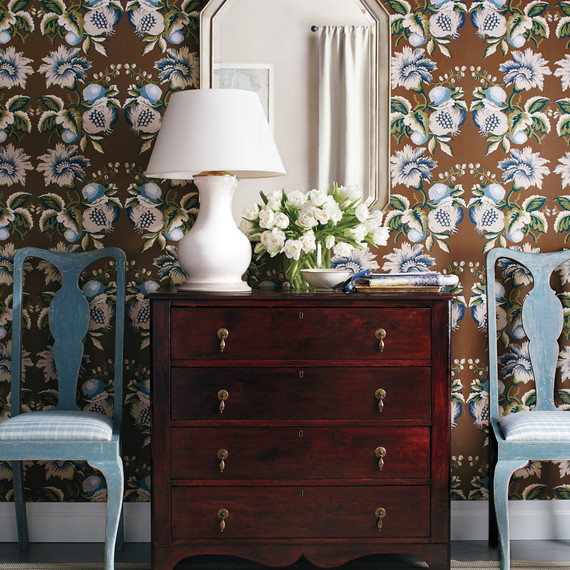
Photography by: Ryan Liebe
The Piece
Pourny liked this nice old dresser for its clean lines and great detailing. But he thought it had an unappealing finish—and pine isn’t the most noble of woods. It was the ideal piece to upgrade.
The Fix
The plan was to capture the rich, dark patina of 17th-century furniture—a reddish-brown oxblood hue. This unpretentious yet lovely finish works well for rustic pieces, because it fills up the grain but still preserves a sense of texture.
Curved high-back chairs, chelseatextiles.com
Medium Hann lamp, in Clear, christopherspitzmiller.com
Fontaine mirror, ballarddesigns.com
Nimes Ticking woven-cotton rug, dashandalbert.com
Jessup wallpaper, by Oscar de la Renta Collection II, in Sepia/Indigo, leejofa.com
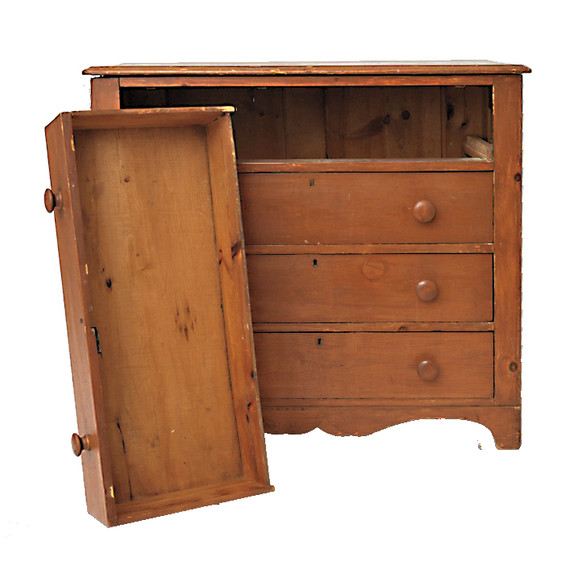
Photography by: JAMES MARCUS-WADE
The Technique
Ciré rempli (French for “filled wax”)
The Process
After the piece is stained, wax is applied, followed by a dusting of pumice; the resulting slurry is rubbed deep into the wood pores, then buffed to a shine.
The Prep
First, the hardware was removed. Then the piece was lightly stripped and sanded, first using grit-150 paper, then grit-180, and finally grit-220.
The Materials
+ Alcohol-based stain
+ 100 percent–cotton rags
+ Colored wax
+ Coarse natural-bristle brush
+ 4F powdered pumice stone
+ Powdered pigment (optional)
+ Denatured wood alcohol
+ Linen-wrapped French polish pad
+ Wool or felt rags
TIP
If you have problems achieving a shine or have rubbed through the wax coating, just reapply wax on the trouble spot or section. Wait one hour, brush it, and start from step 4 again.
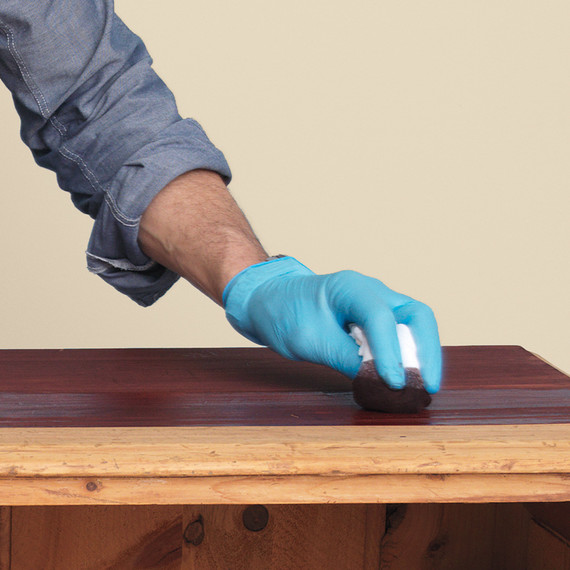
Photography by: JAMES MARCUS-WADE
1. Darken the pine with alcohol-based stain on a cotton rag. Skip this step if you’re working with walnut or a similar deep-toned wood. (In that case, sand a little farther down than usual so the grain is very close, almost polished.) Achieving this cordovan tone required two coats, since pine is pretty light and absorbs lot of stain. Wait a few hours before proceeding to the next step.
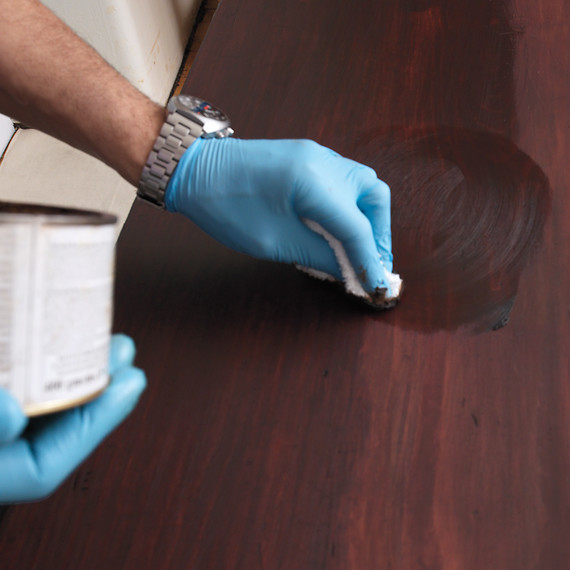
Photography by: JAMES MARCUS-WADE
2. Apply a thick coat of colored wax with another cotton rag. Then let it sink in overnight.
3. Apply a second coat of wax. Wait an hour for it to dry. With the natural-bristle brush (a shoeshine brush is great), go over the finish as if you want to shine it.
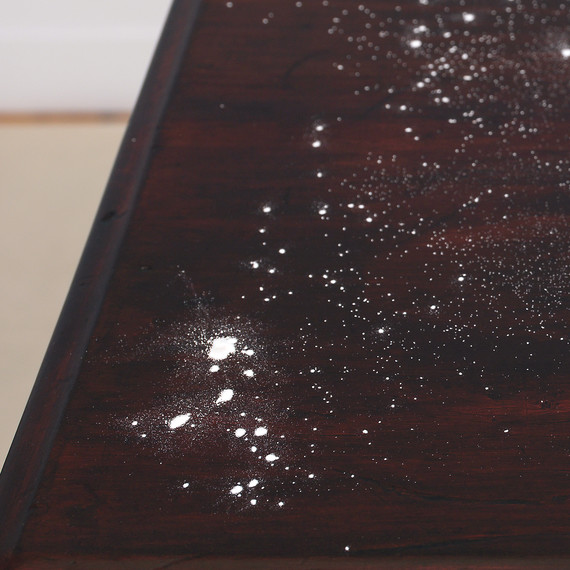
Photography by: JAMES MARCUS-WADE
4. Apply pumice stone. When you have a subtle shine, sprinkle the surface with a cloud of powdered pumice stone, spiked with a bit of powdered pigment (the kind used for staining, to be diluted in oil) if you want enhanced coloration. Massage it in lightly with your hand—but don’t press, which would rub off some of the wax.
5. Charge your pad. Pour a light amount of wood alcohol onto the outside of the linen-wrapped French polish pad. Tap it gently on the back of your hand to evenly distribute the alcohol. Your pad should be damp, not dripping wet.
6. Fill the grain. Force the wax-pumice mix into the wood grain with the alcohol-charged pad, rubbing in a circular motion; when you start feeling like you have to force the pad, every 10 minutes or so, recharge it with alcohol. This step “closes” the grain and creates a polishlike effect. Right away, you’ll notice an integral shine—more of a sheen, really—that emanates from inside the wood grain.
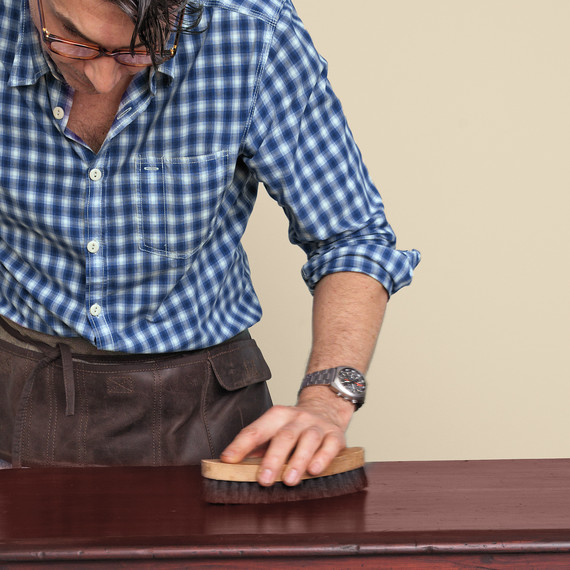
Photography by: JAMES MARCUS-WADE
7. Give it a final buff. Wait overnight so the wax dries thoroughly, especially when executing this finish. Buff lightly with a soft wool or felt rag, and voila: a magnificent shine!
8. Replace the knobs. The piece probably had handles originally, since there were two holes, one of which was patched. The simple brass drops give the rustic piece another layer of sophistication—introducing metal to complement the look.
Why Wax?
While oil is great for imparting a satin shine to hardwoods and midcentury-modern furniture, wax is ideal for lending a warm patina to more rustic pieces.
Excerpted from The Furniture Bible (Artisan, 2014) by Christophe Pourny.
SOURCE:http://www.marthastewart.com/1110259/reinventing-old-wooden-dresser